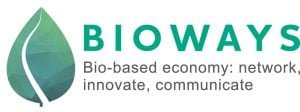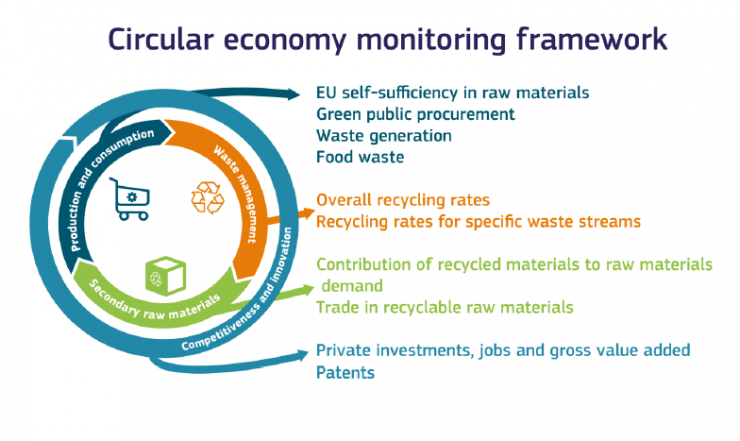A circular economy aims to maintain the value of products, materials and resources for as long as possible and
minimise the generation of waste. The European Commission publishes today a Communication on the monitoring
framework for the circular economy and an accompanying Staff working document. In order to underpin this
initiative, Eurostat, the statistical office of the European Union, is launching a new website section dedicated
to circular economy reporting all the indicators of the monitoring framework, updated with latest data, as well as
supporting visualisation tools.
The Commission monitoring framework is a key tool to measure progress and cover the different phases of the
circular economy in the EU and Member States and, as a result, show if the existing policy initiatives are successful
in delivering the expected outcomes and identify areas where more action is needed. It is an essential contribution
to the EU’s efforts to develop a sustainable, low carbon, resource efficient and competitive economy.
The framework is structured into four broad areas: production and consumption, waste management,
secondary raw materials and competitiveness and innovation. Several more specific indicators have been
identified for each area. The production and consumption area addresses the EU’s self-sufficiency in raw materials,
green public procurement, waste generation and food waste. The waste management indicators focus on the share
of waste which is recycled in relation to the whole economy and specific waste streams. The secondary raw
materials area measures the contribution of recycled materials to raw materials demand and trade in recyclable raw
materials. The competitiveness and innovation area measures private investments, jobs and gross value added, as
well as patents related to circular economy sectors.

In the new Eurostat website section on Circular Economy you can discover, for instance that the circular economy sectors created around EUR 141 billion of value added in 2014, which represents an increase of 6.1% compared to 2012.
You may discover that on average, recycled materials satisfy only around 10 % of the EU demand for materials, in spite of a steady improvement since 2004. For a number of bulk materials, secondary raw materials satisfy over 30 % of total demand for materials (e.g. copper and nickel). Furthermore, the EU is a net exporter of several major recyclable waste streams such as plastics, paper and cardboard, iron and steel, copper, aluminium and nickel.
Figures also show that the recycling rates for packaging waste have increased in the EU, from 62% to 66% between 2008 and 2015. For plastic packaging, the average recycling rate in the EU is significantly lower, at 40%, even though there have been improvements in recent years.
Source: Eurostat Newsrelease (10/2018 – 16 January 2018)
For more information:
Communication from the Commission on a monitoring framework for the circular economy
Commission Staff Working Document measuring the progress towards circular economy in the EU – key indicators for a monitoring framework
Eurostat website section dedicated to the circular economy
Follow BIOWAYS to keep on discovering the world of bioeconomy
www.bioways.eu


